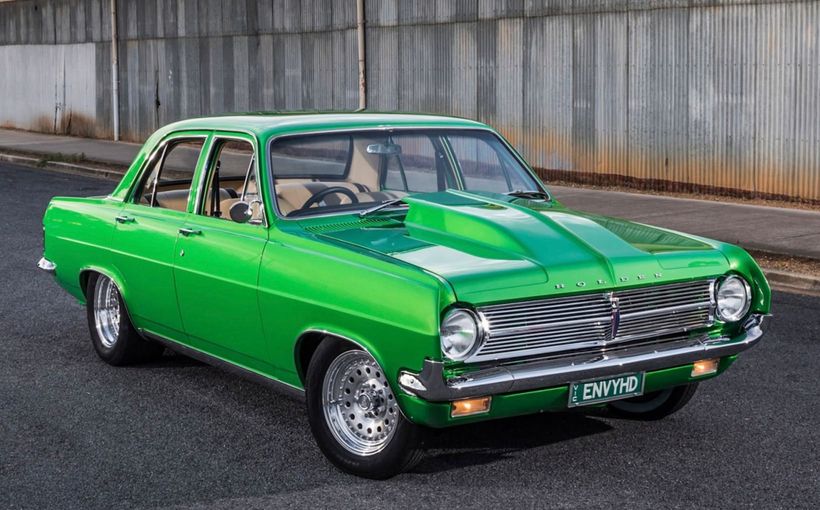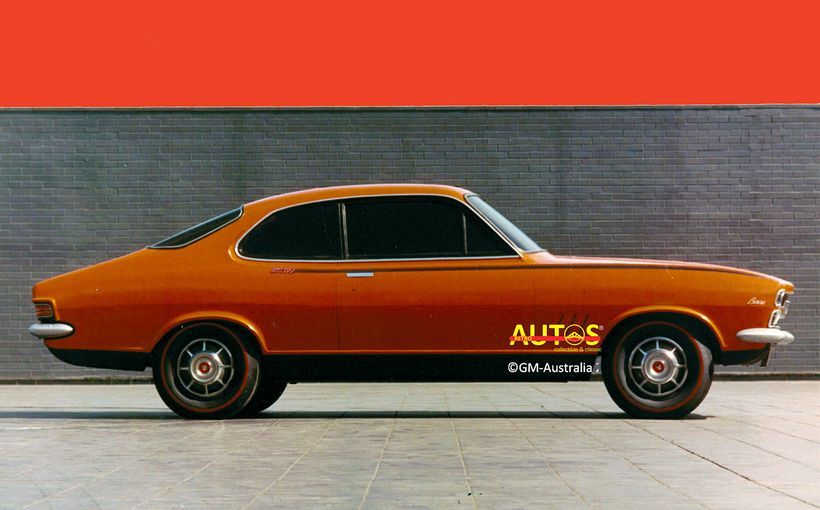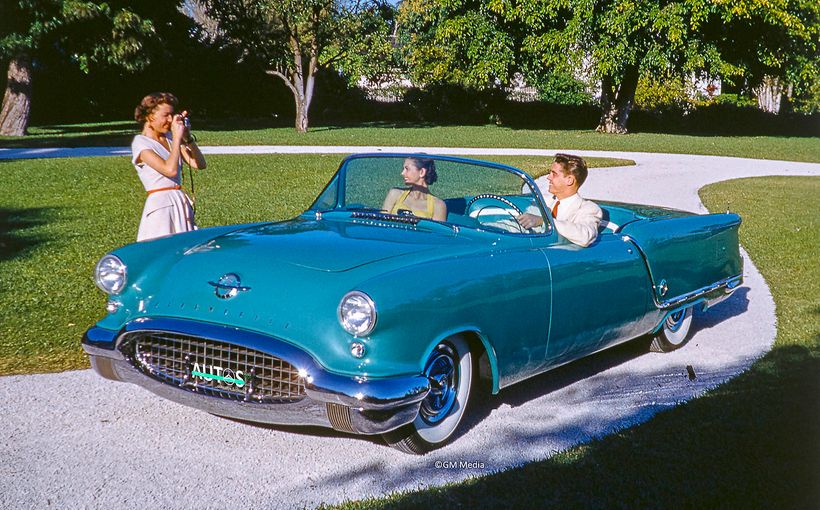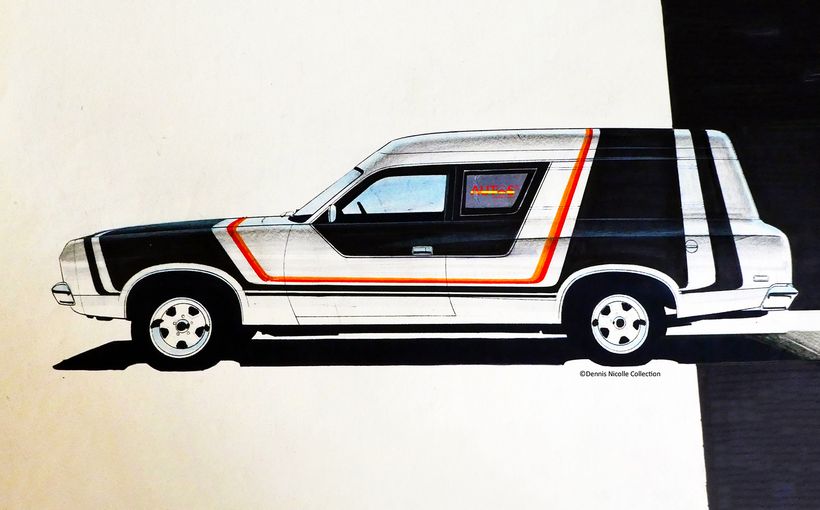
It has always been a bit of a mystery to me why the HR Holden is so often overlooked by collectors and enthusiasts.
Released in April 1966, and sandwiched between the (supposedly) stylistically controversial HD and the Oldsmobile/Pontiac/Cadillac influenced HK range, the HR is often dismissed as the “Hastily Restyled” version of the HD.
It’s almost as if the critics can do nothing more than repeat the familiar police warning: “move on, move on, nothing to see here.”
Well, as usual, I disagree. The HR was a big success.


For a start, the HR’s styling was mostly agreed by mid-1964, almost a year before the HD was released. Internal Holden documents, sent to GM in the USA and dated March 1964, summarise the planned changes for the HR. The report highlights that the front and rear ends will be re-styled, engine sizes and power will increase, ride height will decrease and wheel track width increase. The introduction of an optional four speed Opel-sourced manual transmission is also included in the report.
Nothing Hastily Revised at all. Fake news.
Those that give the HR scant credence, also conveniently gloss over its sales figures. Dealers saw 252,352 units leave their showrooms in the 21 months it was on the market. By comparison, the 1966 “Mustang Bred” XR Falcon achieved only 90,000 sales in 19 months.


Said Paul Beranger in his fabulous book, Crayon to CAD, “Australian customers responded to the design and specification changes by opening their wallets, taking the HR to a new sales height.”
At the time it was Holden’s all-time second-best seller, behind the EH. It took until 1974, when the HQ range’s sales were finally tallied, to displace the HR to the number three ranking on the sales chart.
And let’s not forget that consideration was given to building a HR coupe.
How the HR went from Design to Driveway
The HR styling was a collaborative effort, from late 1963 to mid-1964, between American Joe Schemansky and Holden’s local design team.
Joe was one of Bill Mitchell’s, GM’s global design boss, most trusted managers. Last month in Retroautos I wrote about Joe and his career, touching briefly on the HR’s design journey.
How Joe came to involved with Holden is an often-told story, and dates back to 1961 when Mitchell ordered GM’s global design studios to intervene in Holden’s design efforts. For the full background you need go no further than numerous sources of enlightenment here on Shannons Club. (see the end of this story for the links)
The short version of the story goes like this: after the intervention by Mitchell, he gave Joe the task of reviewing Holden’s design capabilities, from a technical and people perspective. Joe also gave advice about establishing Holden’s new design studios in its new Technical Centre and was given responsibility for developing the shape of the HR. Joe flew to Melbourne on a number of occasions while the HR’s styling was evolving.


Internal Holden reports. dated December 1963, reveal that the company was evaluating either a “minor” or “medium” restyle for the HR facelift. The common focus was three of the HD’s major design features—the front fenders, rear fenders and C pillar.



The HD had been shaped, in early 1962, by Leo Pruneau and Don Lasky in the USA, under the watchful eyes of Mitchell. The HD and its larger “twin”, the 1964 Opel Kapitan were based on a secret GM concept car, the Solaris.
Mitchell’s insistence on the prominent front fender blades, and the debate about their size and shape, is now Australian automotive folklore.
Leo spoke to me about the HD. “Originally Don and I had the car with flatter front fenders that were similar to the Opel Kapitan’s, which we had done just prior to the HD. But Mitchell thought the HD looked too short, so he told us to make the fenders jut out ahead of the grille. So, we worked to lengthen the blades. That’s when Reg Hall arrived from Australia.”


Reg was Holden’s chief body engineer and highly respected throughout GM. Leo continues with the story. “Well, Reg took one look at them and protested that it would be too hard to manufacture and told us cut them back. So, we did what he asked. Next thing we know is that Mitchell is back in the studio and he ordered us to lengthen them again. And then Reg asked us to shorten them again. This argument went on for a couple of weeks and Don and I would cut them off and stick them back on again. Of course, Mitchell was always going to get what he wanted because he was the boss and he convinced Holden’s management to go with a slightly modified design and that’s the way the car went into the showrooms.”
One of the most memorable photos ever taken of a car’s development shows Reg staring at the front end of the clay model of the HD, then coded EF. You can only guess what he is thinking.

It is against this background that work began on the HR. The less costly minor restyle involved retention of the HD’s existing front fenders flanking a new grille with inboard turn indicators. The HD’s C pillar, rear window and rear end design were to be retained.
The medium restyle featured more extensive changes to the sheet metal: new grille, wider C pillar and rear window, new rear fenders and vertical tail lights. Interestingly, at this point the HD’s front fenders were to carry over.
Photographic updates were sent to the USA and combined with full size line and tape drawings, which were then presented to Bill Mitchell by Joe in the GM styling dome in January, 1964.




On 1st April, 1964, Joe was officially appointed Holden’s first design director, though he’d been operating in this capacity for at least 6 months.
As close as I can pinpoint it, in mid-1964 it was agreed that the medium facelift would be progressed, with revised front fenders. I suspect that some inside Holden, including Joe, were uneasy about the HD’s jutting blades. Whilst their elegant thinness accentuated the class leading, space saving curved body and door glass, the “kidney cutters”, as they became known by the media and public, quickly defined the HD, overshadowing its other attributes. The final shape of the new fenders was not agreed until early 1965.


In addition to the blades, Joe and his team had their work cut out for them because they were hemmed in by the HD’s overall dimensions and its “tippy-toed” appearance. The advantages of the rounded body were negated because it was draped over the EH’s narrow track, sat on a wheelbase which was a mere inch/25mm longer than the EH’s and rode on an SUV-like nine inch/229mm of ground clearance.

When the HR was released the motoring media and public saw that the blades had been blunted and vertical Cadillac-inspired tail lights were embedded in new rear fenders. Sharp eyed observers noted that the C pillar was now wider and flush with the body.
The overall result was a bluffer appearance. It was a case of ensuring the car’s “optics” matched Holden’s reputation as a conservatively styled and rugged product and acknowledging the squarish shapes which Australian buyers preferred in the 1960s.
Commenting in his book about what Joe and his team achieved, Paul Beranger wrote that “under Schemansky’s leadership in the new design facility, many of Mitchell’s styling excesses, prevalent in the HD, were detuned, giving the HR a more refined and broadly appealing appearance.”
Joe and his team had done what car stylists had been doing for years. They made many small changes which together “cheated” the eye and redirected attention.
The vertical tail lights, split between the stop light and turn indicator, remained almost unchanged through the development process. The widening of the C pillar added visual width at the rear. This small, almost unnoticed, design change gave the HR a shared design feature with GM’s hero car of 1966, Oldsmobile’s fabulous Toronado. It also predicted the C pillar shape of every new Holden sedan and coupe (except for the Premier/ Brougham/Statesman) from the HK Monaro onwards and well into the 1980s.


So, what to do about the HD’s blades? Being so striking and attention grabbing, Holden had made them a centre piece of their advertising and brochures. They angled down and then dropped vertically to meet the upturned bumper bar.
The solution was to cut the metal so that the lower half angled back. The leading edges were flattened, widened and made flush with the bonnet. In side view, the front and rear fender shapes were now mirror copies, giving the car balance. Viewed from the front, the prominence of the front blades was significantly muted.

The HD’s grille comprised a double decked concave shape which emphasised the fender blades. The first proposal for the HR used multiple horizontal bars which stretched uninterrupted across the car. The bars framed deeply recessed turn indicators. The HD’s bonnet “cut-out” for the headlights was removed. The lights sat inside new, large square bezels, which were recessed into the grille and nestled against the inside edge of the fenders. It all looked neat and very crisp and somewhat similar to what Ford developed for the XP Falcon.


The final version was a convex shape, bisected by a vertical Holden Lion emblem. The oversized inboard turn indicators gave the impression of dual headlights.
Visually, the various changes combined to make a significant difference. The car looked considerably less curvaceous. At a first glance it appeared as if the blades had been eliminated. They hadn’t, of course. They were hiding in plain sight, having been beaten back into submission. It was all very simple and very elegant.
Ride height was lowered an inch/25mm via reduced spring heights and lower profile tyres. It was not much but it helped to address the “tippy toed” appearance which afflicted the HD.
To give the Premier more visual exclusivity, four headlights and different tail lights were considered. It was decided that those two ideas would be held over for the HK Premier.


HR Coupe
During 1963 when Joe was making his frequent visits to Holden, he encouraged the local styling team to create renderings of a HD and HR coupe and convertible, if only to see what they would look like.
Alf Payze and David Veltman worked up a number of ideas. You can see all of the photos in the second volume of my book series Design to Driveway. A HR coupe mock-up was built. A photo of this prototype found its way onto the pages of the January 1967 edition of Australia Motor Sport and Automobiles magazine, one of this country’s forgotten car publications.
Internal Holden documents, dated December 1963, recorded senior executives discussing the costs of a HR coupe. These discussions explored the possibility of implementing the cheaper minor facelift for the sedan instead of the more costly medium facelift, and using the money saved to fund a coupe.


The decision to implement the medium facelift terminated any enthusiasm for a HR coupe. Realistically, it was wishful thinking to divert precious time, energy and money towards a two door that would have just 21 months of shelf life. But the HK range was a different proposition altogether. The Monaro was the outcome.
So, what would a HR coupe have looked like? I explored that tantalising possibility in the January 2017 edition of Retroautos. The link is at the end of this feature.
HR Legacy
Within Holden, Joe was congratulated for having achieved, as Dr John Wright notes in his book Heart of the Lion, “a most effective revision of the HD.” And the revision came none too soon.
The HD sold well enough during its 14 months on the market, with 178,000 going out the door. Its biggest month was March 1965 which saw 18,690 sales, as noted in Dr John Wright’s book. Subsequent months’ sales were not as stellar. Applying some arithmetics it appears that the HD’s sales could have fallen to around 10,500-11,000 a month in the period just before the HR’s release. The HR provided a much needed boost of approximately 10%.
In March 1966, Chrysler put its VC Valiant into the showrooms and in October 1967 came the VE. In September 1966 Ford unveiled its longer, wider and roomier XR Falcon, with a V8 option across the range.
The Falcon would set the exterior and interior package parameters for an affordable Australian-built family car for the next five decades. Its 111 inch/2820mm wheel base and wide choice of options was matched by Holden and Chrysler during the next few years. Neither company wanted the ignominy of offering family cars that were “smaller” than the Falcon.
Holden quoted motoring writers of the day to extoll the HR’s virtues in an advertising campaign. It also pushed the 186S and four speed transmission to counter the Falcon’s V8.


In a daring move, Holden’s advertising of the HR Premier compared it to three of GM’s most expensive coupes of 1966 and 1967: the Oldsmobile Toronado, Buick Riviera and the Cadillac Eldorado. The advertisements held out the hope that all three cars might soon be available in Australia, but in the meantime, while you waited for their arrival, buy a Premier! Yeah, right.


The HR was one of the first cars in the world to be fitted with front seat belts as standard. These came as part of a model upgrade in September 1966 that also included windscreen washers, padded sun visors, shatter proof interior rear vision mirror, safety glass, exterior driver’s side mirror, reversing lights and rear seat belt mounting points.
To show off the strength of the seat belts, Holden’s PR team organised for a Vauxhall Viva to be suspended by seat belts under a HR. An anchor plate broke and the result was national news.


The HR’s legacy is that it easily held the fort while the HK was readied. Its 252,352 sales make it clear that in 1966-67, buyers of family sized cars still preferred a Holden ahead of the competition. On an annualised basis, the HR outsold the Valiant and Falcon, combined, by almost 40%.
As if marking the end of an era, the HR was the last Holden to carry the storied “Special” and “Standard” model descriptions and a HR was Holden’s 100,000th export.

Special thanks to John Field and Richard Ferlazzo at GM-Australia for sourcing many images. John Kyros at GM Heritage also went above and beyond to search for images. All images are the copyright of the owners. Background on GM’s intervention in Holden’s design decisions can be found in Retroautos April 2019 (LINK), May 2018 (LINK) and February 2017 (LINK).These links take you to Retroautos stories about the Solaris (LINK) and Kapitan (LINK). My Design to Driveway books also delve into what went on behind the scenes as does Dr John Wright’s Classic Garage story (LINK). In 2015 Dr John Wright and Mark Oastler discussed the HD and HR on Shannons Club TV. Here’s a LINK. The Retroautos HR coupe story can be found via this LINK. Retroautos is written and published with passion and pride by David Burrell.









